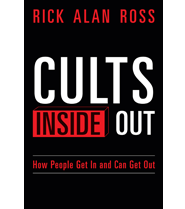The Upper West Side Cult That Hid in Plain Sight
Published By admin

Cults thrive in isolation, and this poses a challenge for the urban cult leader. Jim Jones, of the Peoples Temple, exerted an unsettling degree of influence on San Francisco politics of the late nineteen-seventies but was eventually forced to flee to his doomed jungle outpost in Guyana. Charles Manson made halting inroads in the late-sixties Los Angeles music scene while his Family hunkered down on the fifty-five-acre Spahn Movie Ranch. Scientology has prominent real-estate holdings in major cities across the world, but its élite management unit, the Sea Org, was originally intended to operate in international waters, in order to evade government and media scrutiny.
At its peak, in the mid- to late seventies, the psychoanalytic association known as the Sullivanian Institute had as many as six hundred patient-members clustered in apartment buildings that the group bought or rented on the cheap on Manhattan’s Upper West Side. They also ran an experimental theatre troupe, called the Fourth Wall, on the Lower East Side. The Sullivanians adhered to the same principles and traditions as many of the ashrams and rural intentional communities of the era: polyamory, communal living, group parenting, socialist politics. But they came to their belief system through the gateway of psychoanalysis, the self-actualization tool of the urbane intellectual. And they enacted their beliefs on a crowded concrete island of nearly eight million people, often while holding down high-status jobs as physicians, attorneys, computer programmers, and academics. The institute’s co-founder and reigning tyrant, Saul Newton, who sat atop the organization from the mid-nineteen-fifties until the mid-nineteen-eighties (he died in 1991), may have come closer than any of his far more notorious peers to establishing a truly metropolitan cult—its members visible but its practices obscure.
The son of Russian Jews who immigrated to Canada, Newton was combative and mercurial, a onetime communist labor organizer who had fought in the Spanish Civil War. He had no medical degree or psychoanalytic training, but one of his wives, Jane Pearce, trained under the renowned American psychiatrist Harry Stack Sullivan, one of the pioneers of interpersonal analysis. Sullivan, who died in 1949, eschewed the Freudian paradigm of the therapist as a blank screen; the interpersonal analyst might find opportunities to make reciprocal conversation with patients or even offer advice. Newton and Pearce pushed this more interventionist model in an aggressive, authoritarian direction when they co-founded the Sullivanian Institute, in 1957. As Alexander Stille writes in his juicy, fascinating “The Sullivanians: Sex, Psychotherapy, and the Wild Life of an American Commune,” Sullivanian therapists became “the chief authorities in a patient’s life,” and their forceful guidance reflected Newton and Pearce’s antipathy toward conventions such as monogamy and filial piety. (Newton’s Times obituary dryly noted, “Most mental health experts view the Newton group as having distorted Mr. Sullivan’s name and theories.”)
The Sullivanians’ bête noire was the nuclear family, which they identified as the wellspring of all human pathology. To shake off bourgeois norms, Sullivanian patients lived with same-sex roommates and cultivated close platonic friendships, replete with tween-style sleepovers. They had lots of (hetero)sexual partners—in fact, turning down most any sexual proposition from a group member was frowned upon. But they were not allowed to form steady romantic relationships. To a Sullivanian, Stille explains, sexual jealousy was “a by-product of a capitalist mentality that saw marriage and monogamy as a form of ownership.” (Jackson Pollock, an early Sullivanian patient, was a fan of the method in part because he could cheat on his wife.) Higher-ups prodded Sullivanians to renounce their parents and other blood relatives; one member ceased contact with her twelve-year-old sister because the girl stopped going to therapy. Women had to seek permission to get pregnant. While trying to conceive, they would have sex with multiple men, in order to create ambiguity about their child’s biological father. Newton, for his part, did not lead by example—Pearce was his fourth wife, and there was no uncertainty about the paternity of Newton’s ten children. Wives No. 5 and 6, Joan Harvey and Helen Moses, were also therapists, whom Newton installed as top lieutenants in the Sullivanian enterprise.
Content retrieved from: https://www.newyorker.com/books/under-review/the-upper-west-side-cult-that-hid-in-plain-sight.






